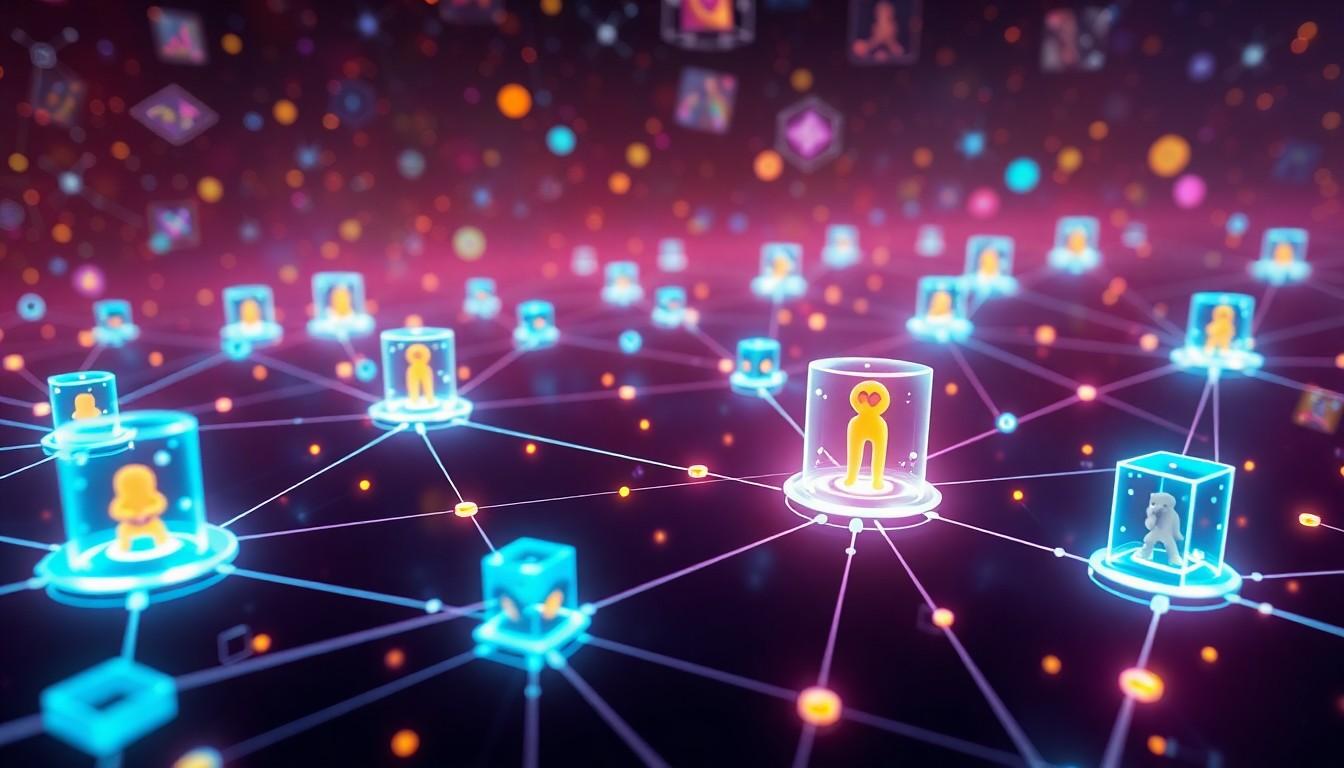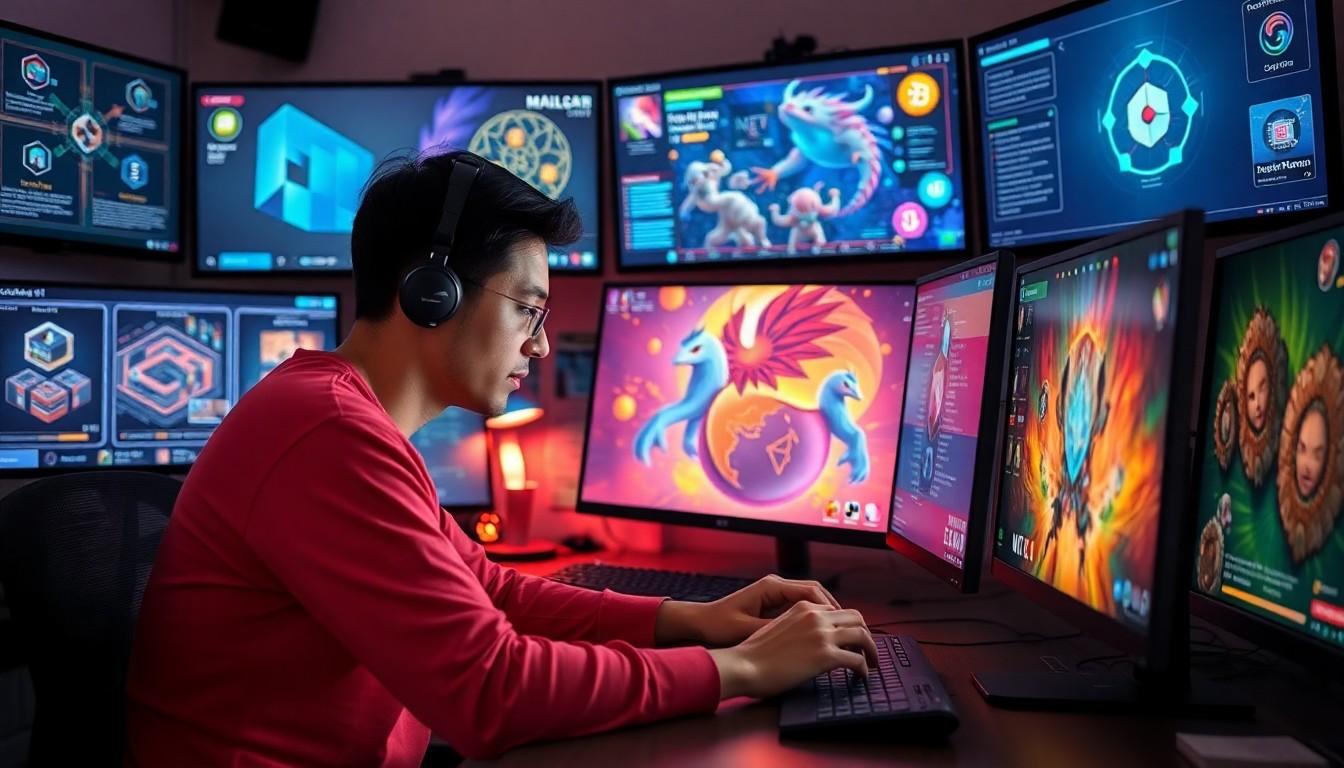The Best Fluffy Pancakes recipe you will fall in love with. Full of tips and tricks to help you make the best pancakes.

NFT Game Development: Revolutionizing Gaming with Unique Digital Assets
In a world where pixels can be worth more than gold, NFT game development is the new frontier for gamers and developers alike. Imagine crafting a virtual universe where players not only conquer challenges but also own unique digital assets that can be bought, sold, or traded. It’s like Monopoly, but instead of fake money, you’re dealing with real crypto.
NFT Game Development
NFT game development represents a significant shift in the gaming industry, integrating blockchain technology with gaming mechanics. Developers create games where players possess unique digital assets, enhancing user engagement and ownership. The core element involves non-fungible tokens (NFTs), which can represent characters, skins, or in-game items. Integration of these assets into game frameworks encourages a vibrant marketplace.
Many developers choose popular blockchains like Ethereum, Binance Smart Chain, and Polygon due to their strong ecosystems. Smart contracts facilitate secure transactions and ensure transparency in ownership transfers. This technology eliminates intermediaries, which often complicate traditional game monetization methods.
User experience remains a top priority in NFT games. Gameplay design balances fun, complexity, and the process of asset acquisition. Engaging game mechanics encourage players to invest and trade NFTs, creating a dynamic economy within the game. Many successful titles, such as Axie Infinity and Decentraland, demonstrate this model by offering unique experiences that captivate players.
Game developers focus on community-building to sustain interest and facilitate interactions among players. Platforms often incorporate social features such as guilds or chat functions to enhance collaboration and camaraderie. Additionally, regular updates and events keep the gaming experience fresh and appealing to both new and returning players.
The landscape of NFT game development continues to evolve. Continuous innovation leads to an increasing number of projects that explore new ideas, genres, and technologies. As awareness grows, more players and developers embrace this trend, expanding the potential of gaming in the digital age.
Key Technologies in NFT Game Development


NFT game development relies on several key technologies, primarily centered around blockchain and smart contracts. These technologies form the backbone of gameplay and ownership in the ever-evolving digital landscape.
Blockchain Fundamentals
Blockchain technology is crucial for NFT games. It empowers decentralized ownership, ensuring players truly own their in-game assets. Players can trade, sell, or transfer these assets freely, significantly enhancing the gaming experience. Popular blockchains like Ethereum and Binance Smart Chain provide the necessary infrastructure, supporting a range of NFT protocols. Transparency stands out as a primary benefit, allowing for clear visibility of asset ownership and transaction history. Immutable records contribute to trust between players and developers, minimizing disputes over ownership and enhancing security.
Smart Contracts Explained
Smart contracts serve as self-executing agreements within the blockchain ecosystem. They automate the execution of transactions and enforce rules without intermediaries, providing a layer of security. When players purchase or trade NFTs, smart contracts automatically verify the transaction details and ownership status. Moreover, developers use smart contracts to create unique gameplay mechanics and royalty structures, enabling recurring revenue from secondary sales. This adaptability fosters a dynamic gaming environment where developers and players can interact more fluidly, enhancing overall player engagement and satisfaction.
The Development Process
The development process for NFT games involves several critical stages that ensure the creation of engaging and functional experiences. Each stage focuses on different elements that contribute to the overall success of the game.
Conceptualization and Ideation
Conceptualization forms the foundation of NFT game development. Teams brainstorm unique concepts that blend gameplay mechanics with blockchain technology. They explore themes, narrative arcs, and character designs that promise player engagement. Unique gameplay elements captivate users while incorporating NFTs in meaningful ways. Market analysis identifies trends, guiding developers to create experiences that resonate with audiences. Prioritizing user engagement ensures the proposed ideas align with player interests and expectations.
Design and Art Creation
Design plays a vital role in shaping the visual and interactive aspects of NFT games. Artists craft distinct visual identities, using color palettes and stylistic choices that enhance the game’s atmosphere. Character and asset designs reflect the game’s themes and mechanics, ensuring players connect with their digital assets. User interface and experience design focus on seamless navigation, enhancing gameplay. Collaboration between designers and developers optimizes graphical elements and asset integration. Emphasizing animation and interactivity further enriches player immersion and satisfaction.
Coding and Implementation
Coding represents the technical backbone of NFT game development. Programmers utilize languages like Solidity for smart contracts and other frameworks for game mechanics. Integration of blockchain features ensures secure transactions and asset management. Developers prioritize performance optimization, aiming for smooth gameplay experiences. Testing phases address bugs and enhance functionality, fostering player trust in the system. Collaboration with blockchain auditors verifies that smart contracts operate seamlessly. Through robust implementation, the game environment evolves into a dynamic space where players can interact freely with their assets.
Challenges in NFT Game Development
NFT game development faces several challenges that can impact its success. Addressing these challenges is essential for creating a thriving gaming ecosystem.
Scalability Issues
Scalability poses a significant challenge for NFT games. High transaction volumes often lead to congested networks, resulting in delays and increased fees. Ethereum, while popular, frequently experiences these limitations, making gameplay less enjoyable. Developers must explore Layer 2 solutions or alternative blockchains to enhance scalability. Some notable alternatives include Polygon and Binance Smart Chain, which offer faster transaction times without compromising security. By implementing these solutions, developers can ensure smoother gameplay experiences, keeping players engaged and satisfied.
Legal and Regulatory Considerations
Legal and regulatory issues loom large in the NFT gaming space. Unclear regulations around NFTs and cryptocurrencies can lead to compliance challenges for developers. Different jurisdictions may impose varying rules, potentially affecting how players can interact with their assets. Intellectual property rights also require careful consideration, as developers must navigate the ownership of in-game assets. Consulting with legal experts is vital for ensuring compliance and addressing potential risks. By staying informed about evolving regulations, developers can mitigate legal challenges and foster player confidence in their games.
Future Trends in NFT Game Development
NFT game development is set to evolve significantly over the coming years. Key trends are reshaping how players interact with digital assets and virtual environments.
Integration with Metaverse
Integration with the metaverse is becoming paramount. Virtual worlds will host NFT games, enabling seamless interaction between different gaming experiences. Players can transact and use assets across various platforms, enhancing their sense of ownership. Community engagement will grow as players collaborate in shared environments. Established metaverse projects are embracing NFT mechanics, creating dynamic economies. This interconnectedness fosters a holistic gaming experience where the boundaries between games blur.
Advancements in Game Mechanics
Advancements in game mechanics are vital for elevating player engagement. Innovative game designs leverage NFTs to introduce unique challenges and rewards. Players can unlock special abilities or content by acquiring specific in-game items. Furthermore, procedural generation techniques are being utilized to create unique gameplay experiences every time. Enhanced artificial intelligence is also enhancing NPC interactions, making them feel more lifelike. Developers are increasingly focusing on user-generated content, allowing players to contribute to in-game worlds and narratives. This approach not only enriches gameplay but also fosters community involvement and creativity.
The future of NFT game development is bright and filled with potential. As technology advances and player expectations evolve, developers are poised to create even more immersive experiences. The integration of blockchain technology not only enhances ownership but also fosters a vibrant gaming community.
With the rise of the metaverse and innovative game mechanics, players can look forward to unique challenges and rewards that redefine engagement. Navigating the complexities of scalability and legal considerations will be essential for success.
Ultimately, NFT games are not just a trend but a transformative shift in the gaming landscape, paving the way for a new era of digital ownership and interaction.




